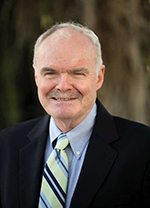Notes from Germantown
As you might guess, the name for this old Philadelphia neighborhood comes from the earliest settlers, who were mostly Square Heads. The old Teutonic names still mark historical places. Pastorius School stands across the street from the non-existent Catholic school, Immaculate Conception, our old joint. It once had 1,600 kids, and that wasn't even the biggest school in the diocese. A parish in West Philadelphia once had almost twice that number – in a grade school. Immaculate, as old timers still call it, burned down in the 1960s and was never rebuilt. The church, a magnificent structure (it would be a cathedral in many cities) that took a quarter century to finance and build, stands empty, a Godless gray stone replica of a lost era.
There are few Germans in Germantown today. In fact, much of the old Germantown is not there anymore. At least that goes for East Germantown, where the former middle class lived. Many blocks, including the one where we grew up, have half the old houses gone. Ours, a three-story twin built around 1898, remains, although it is hard to tell, with its other half awkwardly missing. The houses that remain, in this and many other Philadelphia neighborhoods, are often empty, and those left should be. No glass, no grass.
There are many notable structures in Germantown, but many are idle or used for purposes far removed from their original concept. Department stores, which once made shopping trips to downtown unnecessary, are either empty or used for strange purposes. The corner where Chane's drug store was located, owned by Marvin Chane (who was later the owner of the Bahia Cabana in Fort Lauderdale), is simply unrecognizable.
With so much of East Germantown unrecognizable, why not take advantage of its unfair advantage, which is that an important Revolutionary War battle took place here. Folks from eastern Pennsylvania know the area well. But elsewhere, only history buffs know that on Oct. 4, 1777, George Washington attempted a surprise attack on a British army that had just driven his force out of Philadelphia, which at the time, was the capital of the U.S.
Washington lost the battle, due mostly to unusually foggy weather that screwed up his complicated plan for a three-pronged attack designed to surround the Brits. Two of his pincer units got lost; they never saw a British soldier. The central attack was initially successful, but was repelled when confused American forces fired on each other. Literally, the fog of war.
Even though it failed, the action had an impact on the war. When word reached Europe weeks later, military leaders, especially French generals, were impressed by the audacity of Washington's plan, and the fact that his ragtag army almost pulled it off. Had it worked, the Revolutionary War might have ended six years before it actually did. Arriving at the same time as Benedict Arnold's brilliant victory at Saratoga, the news gained respect for the Continental Army and helped the French decide to aid the American cause.
Unlike Gettysburg, fought in a rural area where development did not overtake history, Germantown eventually grew to be part of Philadelphia, with block after block of tightly packed housing, broken occasionally by older sections of large homes, today mostly divided into apartments. Only a few important sites are even recalled by historical markers. And yet the original battlefield, in its disjointed way, took up a lot space. The main attack began in Chestnut Hill, a few miles north of the heart of Germantown, which was built along a single road leading to Philadelphia, and the unsuccessful prongs of the planned envelopment spread for a few miles on both sides.
Not all that territory is a disaster today; parts are in the pleasant suburbs. But those considerable parts of Germantown no longer fit for human habitation could be razed and turned into a national park. Return it to farmland, which much of it probably was, use the classic old buildings as museums and tourist centers, employ thousands of reenactors to look silly in colonial outfits. Unlike Gettysburg, which has more reenactors than soldiers who took part in the original fight, there are only a few who take part in the occasional Germantown events. But they are men of great courage. They were safer in 1777 than they are in Germantown today.
Since much of Germantown is self-destructing, it might make sense to speed the progress and preserve a historic battlefield. You can begin with our old block. By the way, there’s an impressive church just across the street, just in case anybody gets shot and needs last rites.
Add new comment

